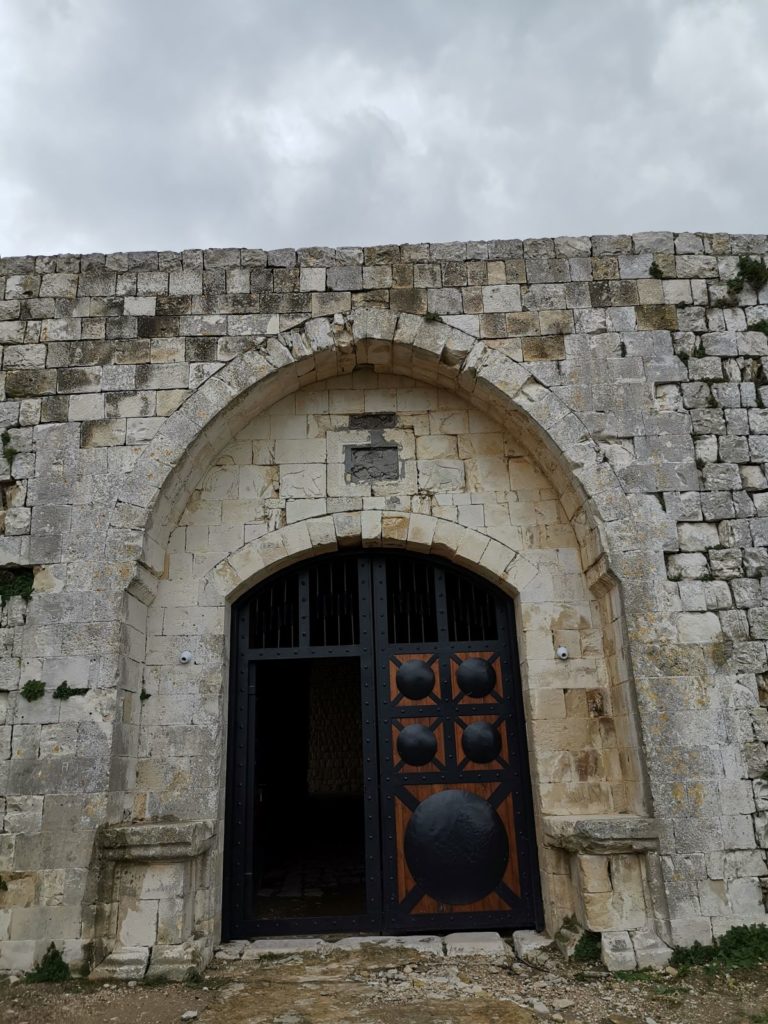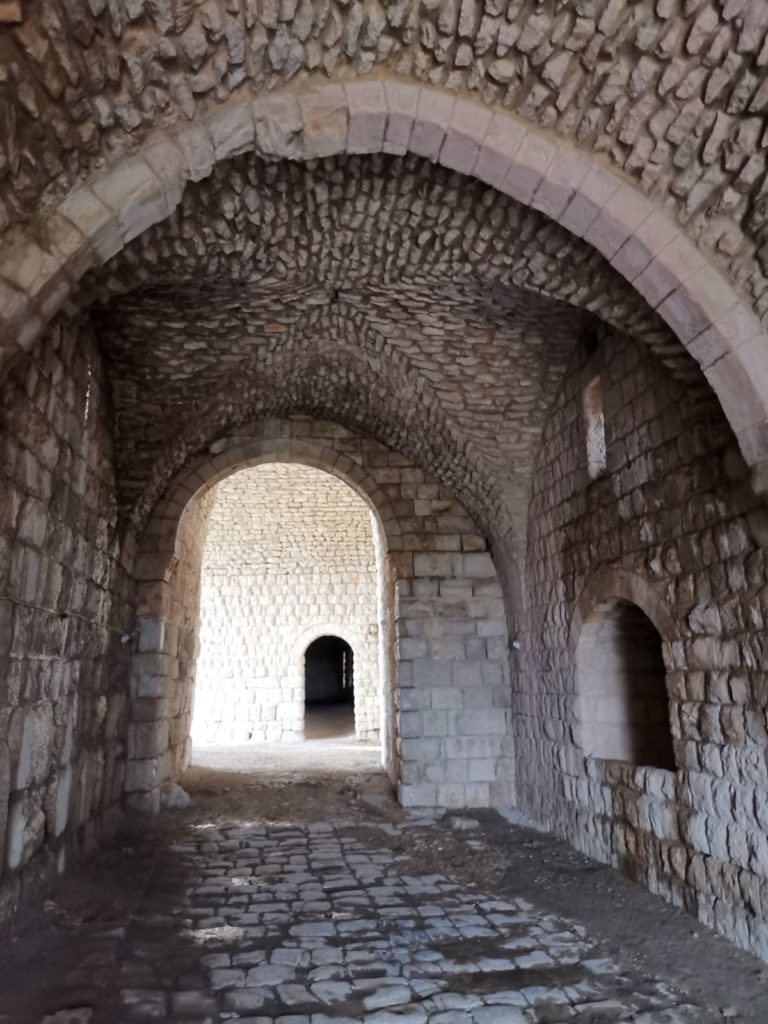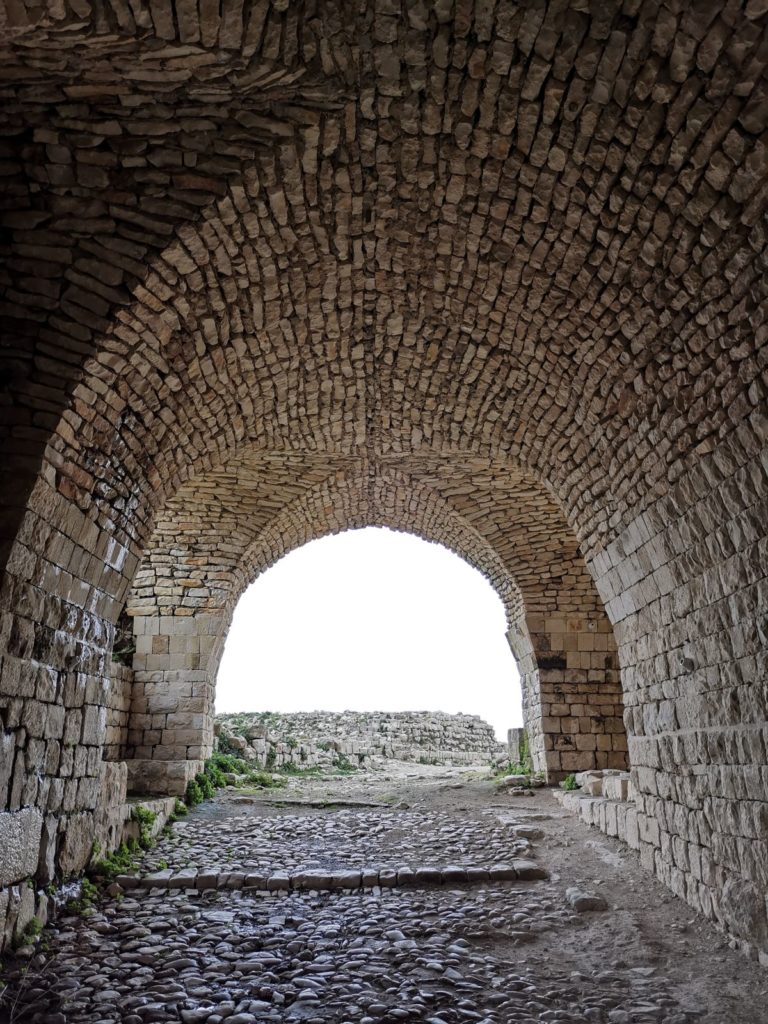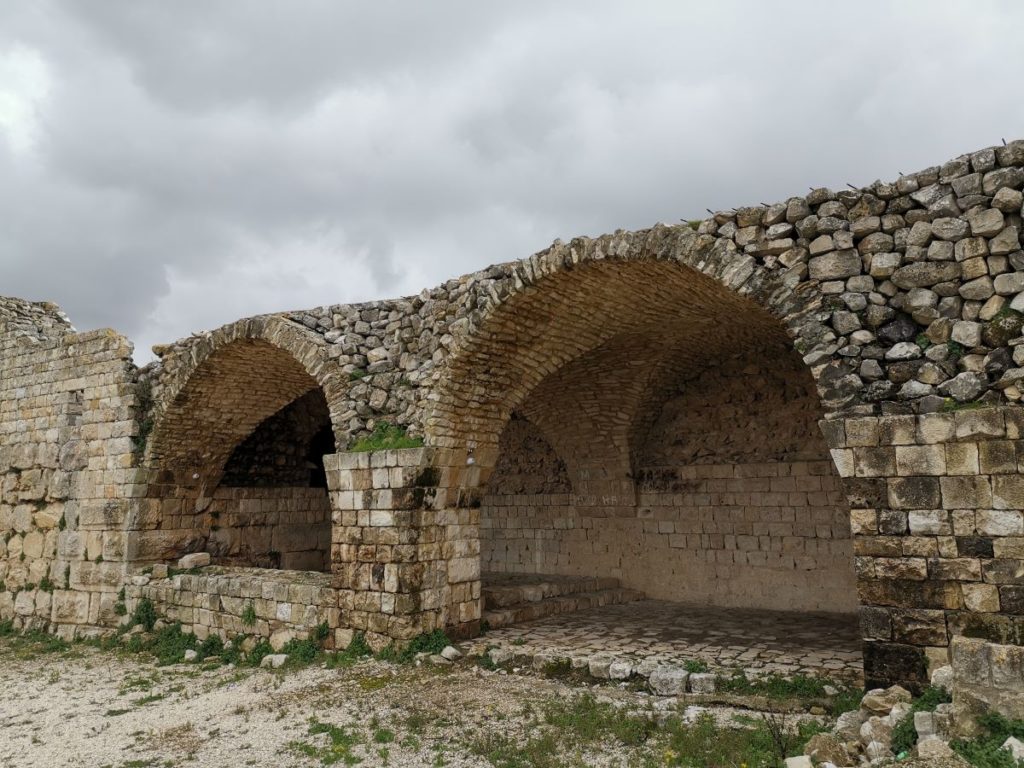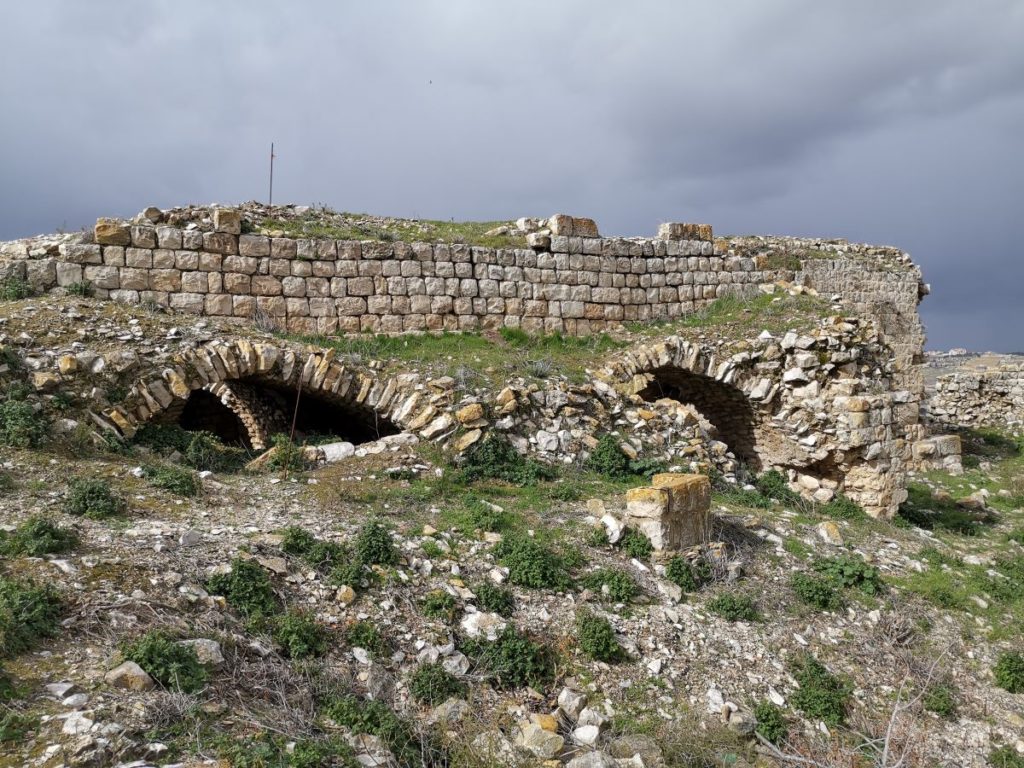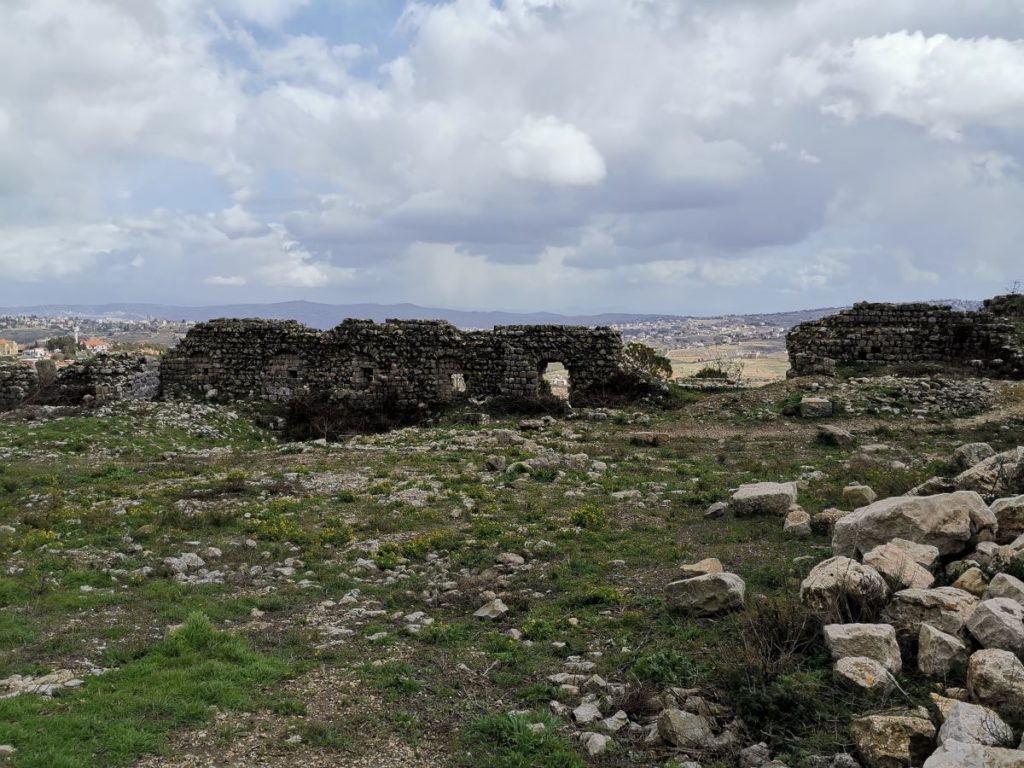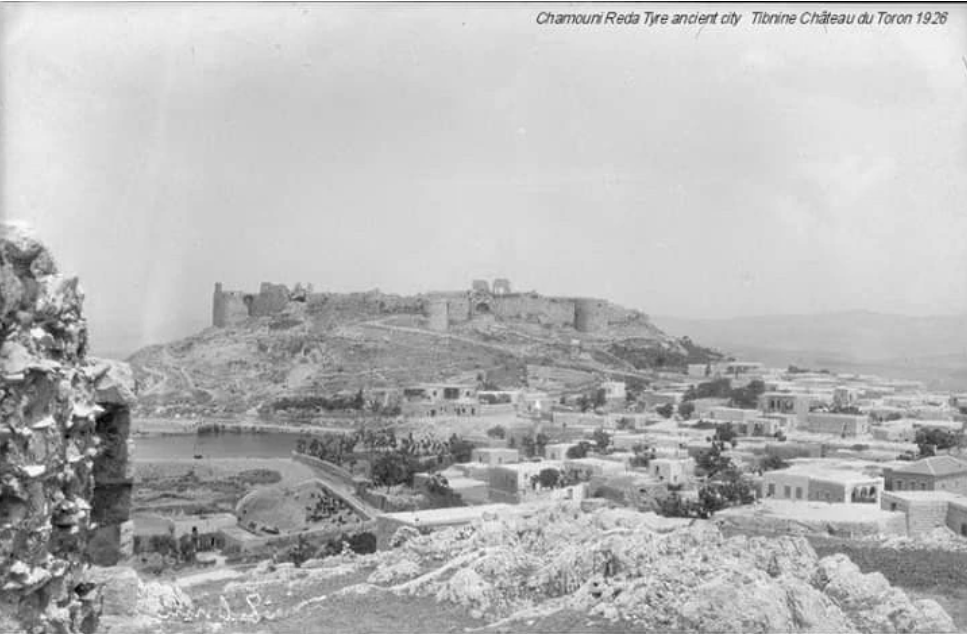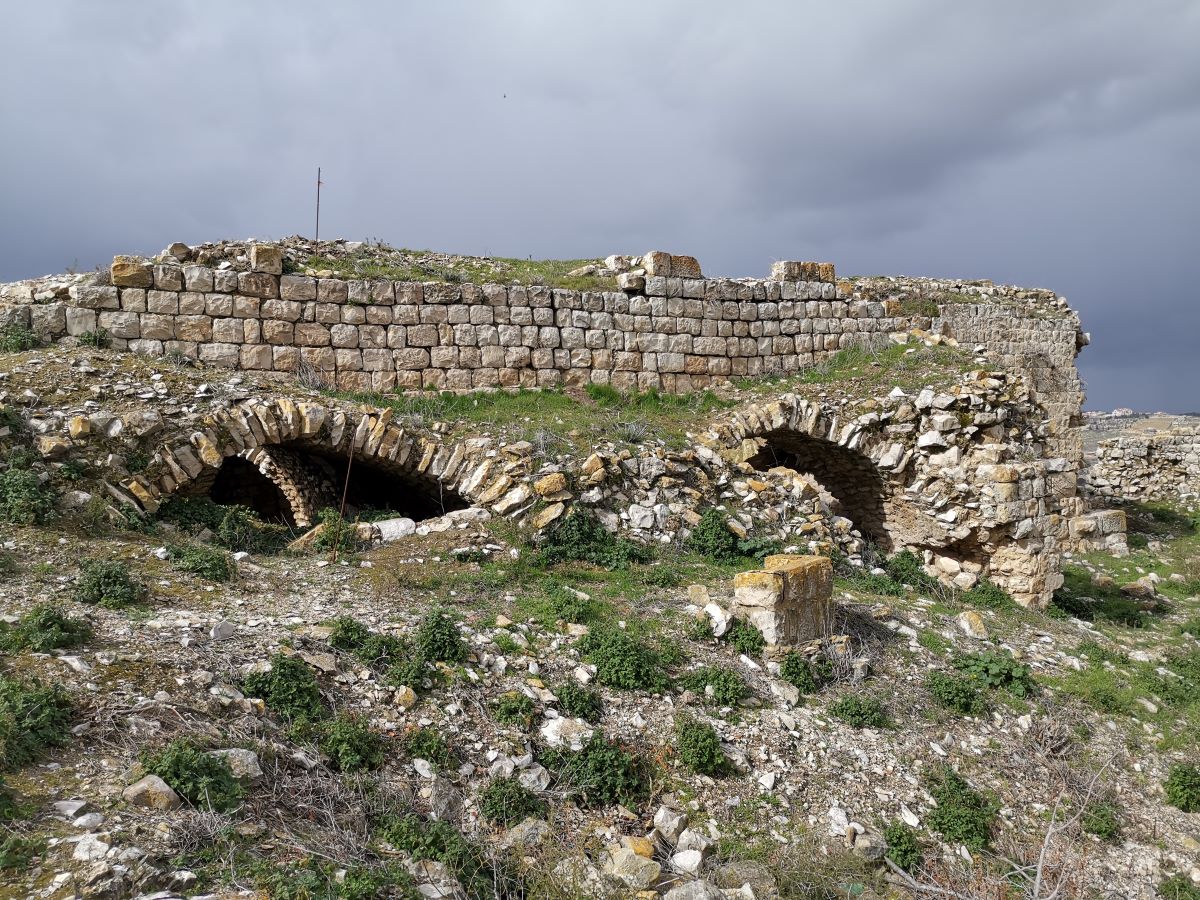Tibnin town houses the remnants of a massive fortress built during the Crusader period, known as Le Toron.
The fortress was the center of the Lordship of Toron, a seigneury within the Kingdom of Jerusalem, and was an important stop on the roads between Tyre, Damascus and Jerusalem. The seigneury even had its own minted coin “CASTRI TONORI” with the fortress as its symbol.
Toponym
Toron, is the name given to the fortress that was erected on top of a rounded hill, from which came its old French designation touron or toron, meaning eminence or isolated hill.
Turo-Militum, is the name given to the fortress by the Templers who controlled the stronghold for a certain period of time.
Tibnin is the Arabic name of Toron and the current village.
Timeline
1104 – 1105 – Le Toron was founded by Hugh of Falkenberg, prince of Galilee.
1107 – Following the death of Prince Hugh, Le Toron was passed to a knight named Humphrey. He founded a dynasty named after the fortress which held its lordship throughout the Crusader period.
1187 – Le Toron fell to the forces of Saladin, and was for a certain period of time under the administration of the Arabs.
1229 – Le Toron was taken back by the Crusaders and given to Alice of Armenia as being the niece of Humphrey IV and heiress of the fief of Tibnin. The castle was later on passed to the French Baron Philip of Montfort following his marriage to Tebnin’s last heiress, Maria of Antioch-Armenia.
1266 – Le Toron fell to the Mamluk Sultan Baibars who raised the stronghold to the ground.
18th century – Le Toron was reconstructed by Sheikh Nassif El Nassar during his struggle against the Ottoman rule. It became later on the house of El Assaad, the family of Sheikh Nassif.
The fortress remained in a fair state until it suffered massive destruction during the Lebanese civil war and the Israeli invasion in the 1980’s.
Structure
The fortress takes a rounded shape since it rests on a rounded hill, flanked by 12 square towers.
What remain today are the substructures and a few foundations of large cut bosses blocks, as well as the entrance gate, prison cells, cisterns, and storage rooms.
*Scroll down to enjoy the pictures and to locate the site on the map.
*Subscribe at the bottom of this page to receive weekly articles and events.
Karim Sokhn
Tour Operator & Tour Guide
References:
Etude sur les monuments de l’architecture militaire des croisés en Syrie et dans l’île de Chypre, G. Grey.
